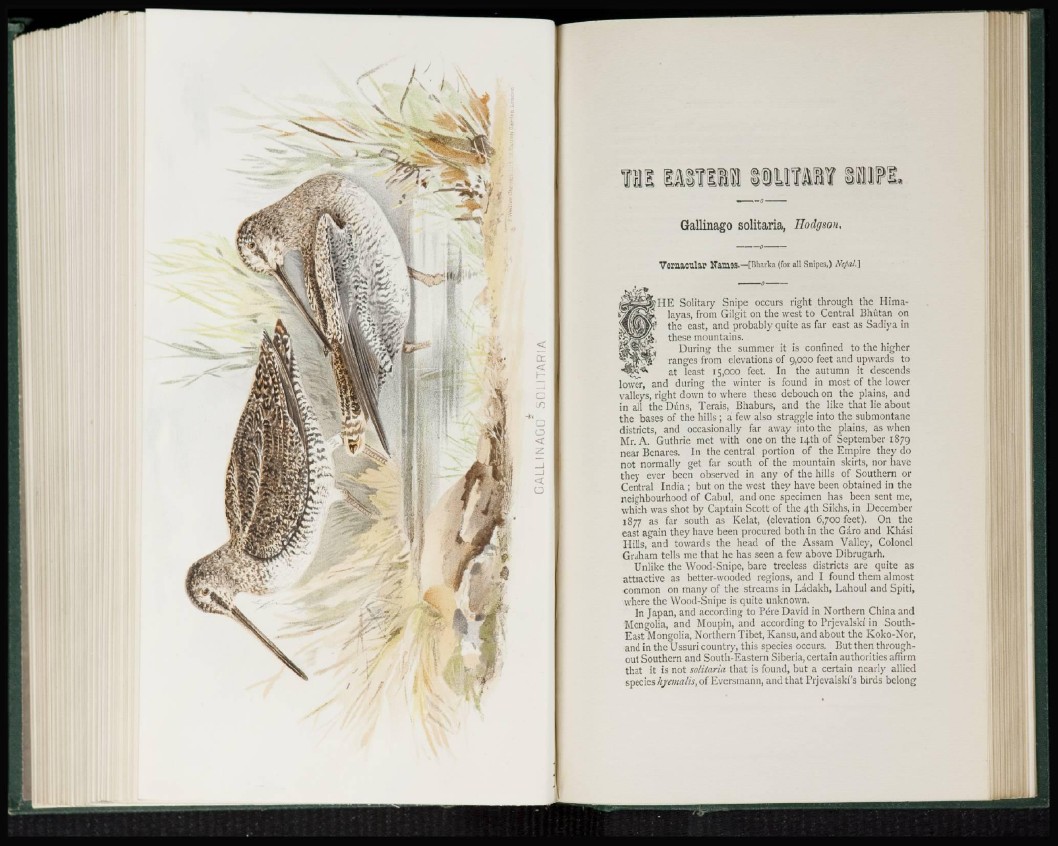
»1
Gallinago solitaria, Hodgson,
VoraaCUlar ITaniSS-—[Bharka (for all Snipes,) Nef>a!.~\
i?HE Solitary Snipe occurs right through the Himalayas,
from Gilgit on the west to Central Bhutan on
the cast, and probably quite as far east as Sadiya in
these mountains.
During the summer it is confined to the higher
ranges from elevations of 9,000 feet and upwards to
at least 15,000 feet. In the autumn it descends
lower, and during the winter is found in most of the lower
valleys, right down to where these debouch on the plains, and
in all the Duns, Terais, Bhaburs, and the like that lie about
the bases of the hills ; a few also straggle into the submontane
districts, and occasionally far away into the plains, as when
Mr. A. Guthrie met with one on the 14th of September 1S79
near Benares. In the central portion of the Empire they do
not normally get far south of the mountain skirts, nor have
they ever been observed in any of the hills of Southern or
Central India ; but on the west they have been obtained in the
neighbourhood of Cabul, and one specimen has been sent me,
which was shot by Captain Scott of the 4th Sikhs, in December
1877 as far south as Kelat, (elevation 6,700 feet). On the
east again they have been procured both in the Ga.ro and Khasi
Hills, and towards the head of the Assam Valley, Colonel
Graham tells me that he has seen a few above Dibrugarh.
Unlike the Wood-Snipe, bare treeless districts are quite as
attractive as better-wooded regions, and I found them almost
common on many of the streams in Ladakh, Lahoul and Spiti,
where the Wood-Snipe is quite unknown.
In Japan, and according to Fere David in Northern China and
Mongolia, and Moupin, and according to Prjevalski in South-
East Mongolia, Northern Tibet, Kansu, and about the Koko-Nor,
and in the Ussuri country, this species occurs. But then throughout
Southern and South-Eastern Siberia, certain authorities affirm
that it is not solitaria that is found, but a certain nearly allied
species^)'^/«<?/z'.r,of Eversmann, and that Prjcvalski's birds belong